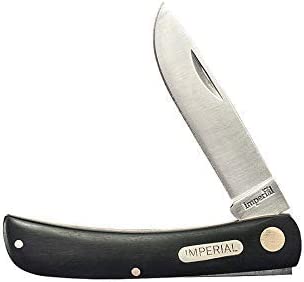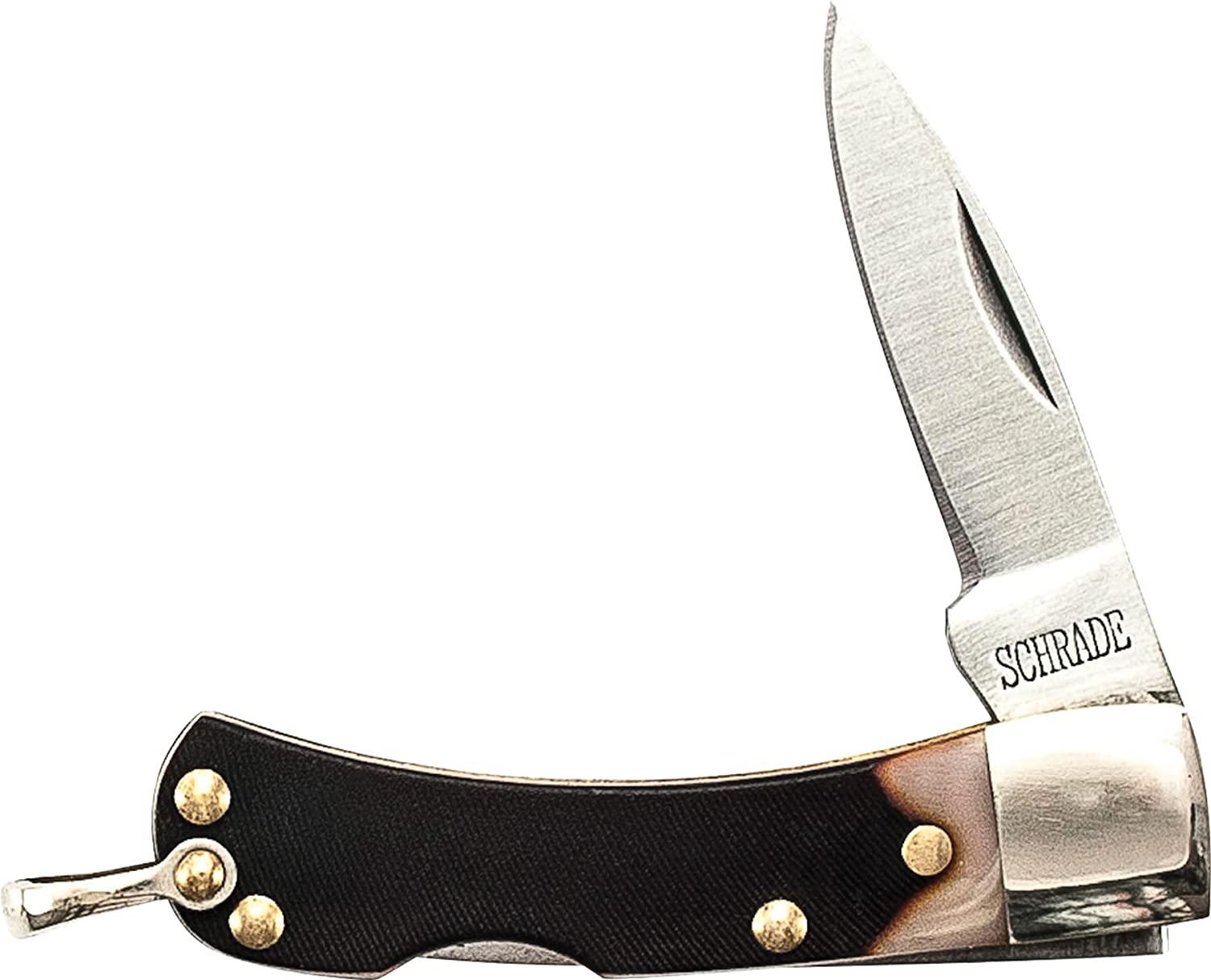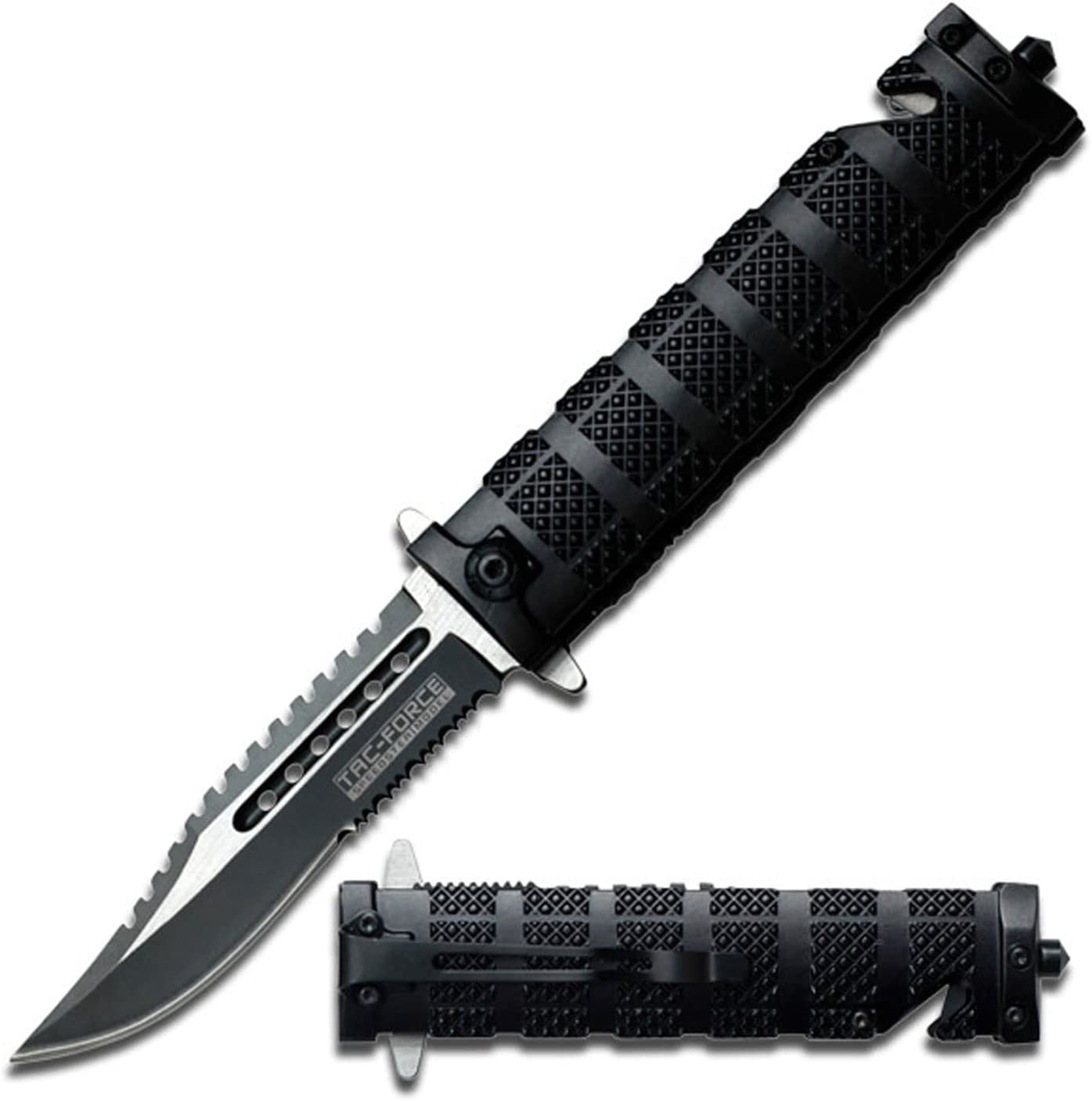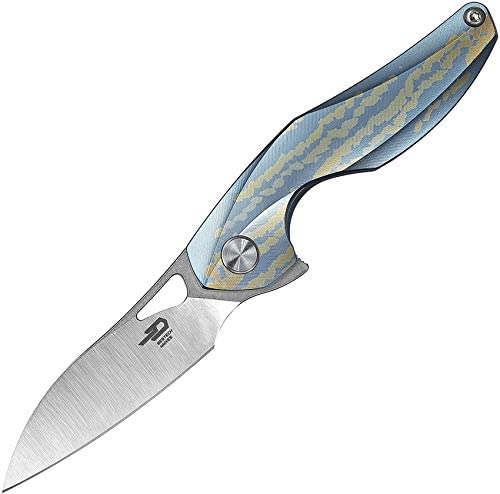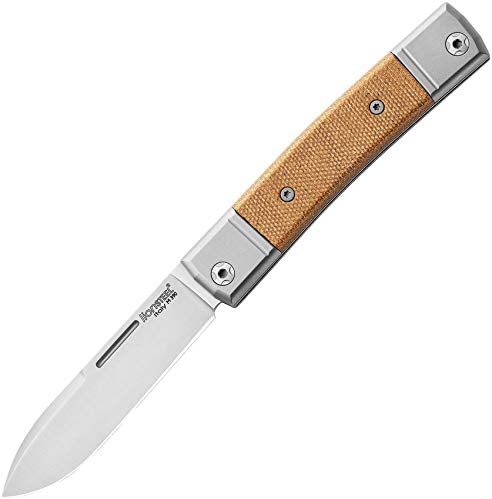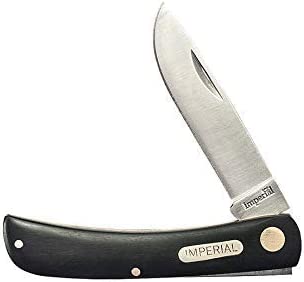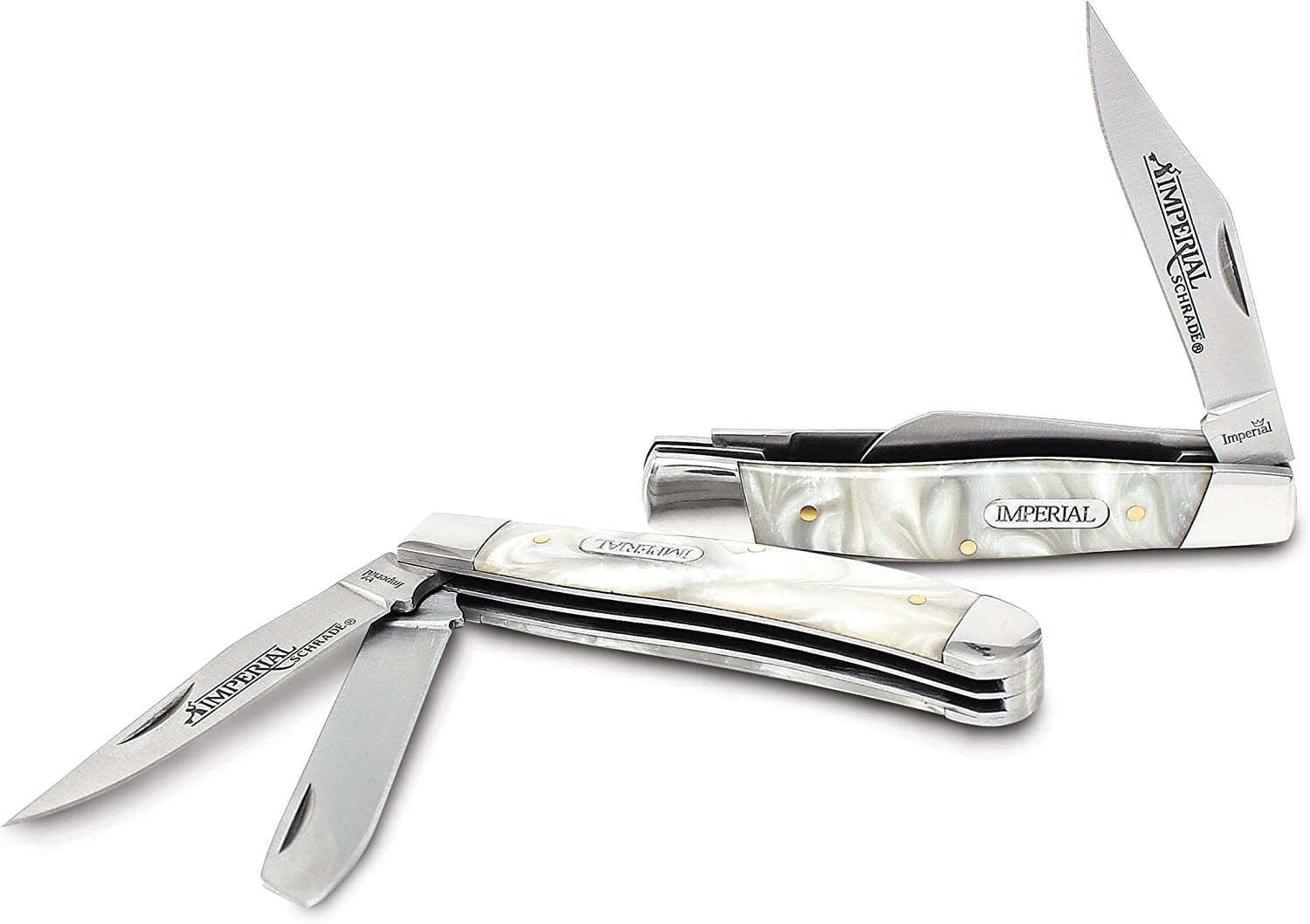In this article, we’ll provide an ultimate guide to folding pocket knives, covering everything you need to know about types, advantages, and maintenance tips to help you choose the right knife and use and care for it properly.
Folding pocket knives are versatile tools that have become increasingly popular for everyday carry. These compact and convenient knives offer a wide range of uses, from opening packages to preparing food and even self-defense in certain situations. However, with so many different types of folding pocket knives available in the market, choosing the right one can be overwhelming. Additionally, properly maintaining and caring for a folding pocket knife is crucial for its longevity and effectiveness.
Read on to learn all about folding pocket knives here. So let’s begin!
Types of Folding Pocket Knives
Folding pocket knives come in a variety of types, each with its own unique features and advantages. Here are the most common types of folding pocket knives available in the market:
1. Lockback Knives
Lockback knives, also known as back lock knives, feature a locking mechanism that holds the blade firmly in place when open. The locking mechanism is released by pressing down on a lever or button, allowing the blade to be safely closed. Lockback knives are known for their sturdy construction and reliability, making them a popular choice for hunting and outdoor activities.
Pros: Strong and secure locking mechanism, ideal for heavy-duty tasks.
Cons: Difficult to operate with one hand, requires two hands to open and close.
2. Liner-Lock Knives
Liner-lock knives are similar to Lockback knives, but instead of a separate locking mechanism, they have a metal liner that is integrated into the handle. The liner locks the blade in place when open and releases when pressure is applied to a spring-loaded bar. Liner-lock knives are lightweight and easy to use, making them a popular choice for everyday carry.
Pros: Lightweight and easy to operate with one hand.
Cons: Less durable than Lockback knives, may accidentally close if not used properly.
3. Frame-Lock Knives
Frame-lock knives are similar to liner-lock knives, but instead of a liner, the handle is made of a single piece of metal that functions as the locking mechanism. When the blade is open, a section of the frame moves into place to lock the blade in place. Frame-lock knives are known for their strength and durability, making them a popular choice for heavy-duty tasks.
Pros: Strong and reliable locking mechanism, easy to operate with one hand.
Cons: Heavier than other types of folding pocket knives.
4. Slip-Joint Knives
Slip-joint knives are simple, classic knives that do not have a locking mechanism. Instead, they rely on the tension of the blade against the handle to keep the blade open. Slip-joint knives are typically smaller in size and are ideal for everyday tasks such as opening packages or cutting string.
Pros: Lightweight and compact, easy to carry in a pocket.
Cons: Less safe than other types of folding pocket knives, blade may accidentally close if not used properly.
Each type of folding pocket knife has its own unique features and advantages. Lockback knives are strong and reliable, liner-lock knives are lightweight and easy to use, frame-lock knives are sturdy and durable, and slip-joint knives are simple and compact. Choosing the right type of knife depends on your personal preferences and the intended use of the knife.
Advantages of Folding Pocket Knives
Folding pocket knives offer a number of advantages over other types of knives, making them a popular choice for many individuals. Here are some of the benefits of using folding pocket knives:
Versatility and Convenience
Folding pocket knives are incredibly versatile and can be used for a variety of tasks. They are also convenient to carry, as they can be easily stored in a pocket or clipped to a belt. This makes them ideal for everyday carry, outdoor activities, and even as a backup weapon for self-defense.
Safety
Folding pocket knives are designed with safety in mind. Most models feature locking mechanisms that hold the blade securely in place when open, reducing the risk of injury. Additionally, many folding pocket knives have ergonomic handles that provide a comfortable grip, reducing the likelihood of slipping and causing injury.
Efficiency
Folding pocket knives are incredibly efficient tools that can help you get tasks done quickly and easily. Whether you need to open a package, cut through rope or string, or prepare food, a folding pocket knife can make the job faster and more efficient.
Customization
Folding pocket knives come in a wide variety of styles and designs, allowing you to choose a knife that fits your personal preferences and needs. You can choose from different blade shapes and materials, as well as different handle materials and colors.
Portability
One of the biggest advantages of folding pocket knives is their portability. They are small and lightweight, making them easy to carry with you wherever you go. This makes them a great tool for outdoor enthusiasts, hikers, and campers, as well as anyone who needs a reliable tool while on the go.
Folding pocket knives offer a wide range of benefits, including versatility, convenience, safety, efficiency, customization, and portability. Whether you need a tool for everyday tasks or outdoor adventures, a folding pocket knife is a reliable and useful tool to have on hand.
Factors to Consider When Choosing a Folding Pocket Knife
Choosing the right folding pocket knife can be overwhelming with the many options available in the market. However, considering the following factors can help you narrow down your choices and find the perfect folding pocket knife that fits your needs and preferences:
Blade Material
The blade material of a folding pocket knife can significantly affect its performance and durability. Stainless steel, carbon steel, and Damascus steel are popular choices for blade material. Stainless steel is corrosion-resistant and low-maintenance, while carbon steel is known for its sharpness and edge retention. Damascus steel is a high-quality, durable material that is prized for its unique patterns.
Blade Size
The size of the blade is another important factor to consider when choosing a folding pocket knife. The size of the blade affects its cutting ability, portability, and legal considerations. Larger blades are better for heavy-duty tasks, while smaller blades are more convenient for everyday carry.
Handle Material
The handle material of a folding pocket knife can affect its durability, grip, and overall aesthetic. Popular handle materials include wood, bone, synthetic materials, and metal. The handle material should provide a comfortable grip, be resistant to wear and tear, and suit your personal style.
Locking Mechanism
Folding pocket knives come with different locking mechanisms, such as liner locks, frame locks, and back locks. The locking mechanism is essential for safety and determines how the blade is secured when open. It’s essential to choose a locking mechanism that you are comfortable with and that ensures that the blade stays securely in place.
Tips on Choosing the Right Folding Pocket Knife:
✅Consider your needs and preferences, such as the intended use of the knife and your budget.
✅Test the knife’s grip and feel in your hand to ensure comfort and control.
✅Choose a knife with a durable and corrosion-resistant blade material.
✅Consider the legal requirements for carrying a folding pocket knife in your area.
✅Read reviews and gather information on the knife’s overall performance, reliability, and durability before
How to Use a Folding Pocket Knife?
Learning how to use a folding pocket knife properly is essential for safe and efficient use. Here are some step-by-step instructions on how to use a folding pocket knife:
1. Opening the Knife:
✅Hold the knife handle firmly in your dominant hand with your fingers wrapped around the handle.
✅Use your thumb to locate the blade release mechanism or thumb stud on the blade.
✅Push the release mechanism or thumb stud with your thumb to open the blade.
Using the Knife:
✅Hold the knife handle firmly with your dominant hand.
✅Hold the item to be cut with your other hand and position it on a stable surface.
✅Use the blade to make the cut, applying firm, steady pressure while keeping your fingers and another hand clear of the blade.
❌Avoid using excessive force or twisting the blade while cutting, as this can cause damage to the blade and handle.
Closing the Knife:
✅Hold the knife handle firmly with your dominant hand.
✅Use your thumb or index finger to locate the blade lock release mechanism, if present.
✅Push the lock release mechanism and carefully fold the blade back into the handle.
✅Ensure that the blade is fully closed and locked in place before storing the knife.
Safety Considerations:
✅Always handle the knife with care and respect, as it is a sharp and potentially dangerous tool.
❌Never use the knife in a manner that could cause injury to yourself or others.
✅Always keep your fingers and other hands clear of the blade when cutting.
❌Avoid leaving the knife open and unattended, as it can pose a hazard to others.
✅Always store the knife in a safe and secure location when not in use.
Different Techniques:
Folding pocket knives can be used for various tasks, including cutting, slicing, and carving. There are different techniques that can be used, such as the push cut, pull cut, and draw cut. It’s important to choose the technique that best suits the task at hand and to use the knife with care and precision.
Maintenance and Care of Folding Pocket Knives
Proper maintenance and care of folding pocket knives are essential for their longevity and performance. Here are some tips on how to maintain and care for your folding pocket knife:
Importance of Maintenance and Care:
- Regular maintenance ensures that your knife is always in good condition and ready for use.
- Proper care helps to prevent rust, corrosion, and other types of damage to the blade and handle.
- Maintaining the sharpness of the blade improves the efficiency and effectiveness of the knife.
Cleaning:
- Use a soft cloth or brush to remove any dirt or debris from the blade and handle.
- Avoid using harsh chemicals or abrasive materials that can scratch or damage the blade and handle.
- Wipe the blade and handle dry after cleaning to prevent rust and corrosion.
Sharpening:
- Use a sharpening stone or other appropriate sharpening tool to maintain the sharpness of the blade.
- Hold the blade at the appropriate angle and apply firm, consistent pressure while sharpening.
- Test the sharpness of the blade by lightly running your finger over the edge.
Storing:
- Store your folding pocket knife in a dry, clean, and safe location.
- Avoid storing the knife in a damp or humid environment, which can cause rust and corrosion.
- Use a protective sheath or case to prevent damage to the blade and handle.
Common Mistakes:
- Using harsh chemicals or abrasive materials to clean the blade and handle.
- Storing the knife in a damp or humid environment.
- Sharpening the blade at the wrong angle or using too much pressure.
- Failing to lubricate the blade and locking mechanism, which can cause stiffness and difficulty when opening and closing the knife.
Frequently Asked Questions About Folding Pocket Knives
What is the legal length for a folding pocket knife?
The legal length for a folding pocket knife varies from country to country and even within different states or regions. It is crucial to familiarize yourself with the local laws and regulations regarding knife length restrictions. In the United States, for example, federal law prohibits carrying a folding knife with a blade longer than 3 inches onto an airplane. However, state laws may differ, so it’s essential to research and abide by the specific regulations in your area.
What are the advantages of a folding pocket knife over a fixed blade knife?
One of the primary advantages of a folding pocket knife is its compactness and portability. Unlike fixed blade knives, folding pocket knives can be easily folded and stored in your pocket, backpack, or toolbox. This makes them convenient for everyday carry and ensures that you always have a reliable tool at hand. Additionally, folding pocket knives are generally more discreet, as the blade can be safely tucked away when not in use.
How do I maintain and sharpen a folding pocket knife?
Proper maintenance and sharpening are crucial to ensure the longevity and functionality of your folding pocket knife. To maintain your knife, regularly clean it using mild soap and warm water, ensuring that you dry it thoroughly afterward. Applying a small amount of lubricating oil to the pivot points will help keep the folding mechanism smooth. When it comes to sharpening, there are various methods available, including using a sharpening stone, honing rod, or guided sharpening system. It’s important to follow the manufacturer’s instructions and take care to maintain the proper angle while sharpening.
Can folding pocket knives be used for self-defense?
While folding pocket knives can be used for self-defense in certain situations, it’s important to note that their primary purpose is as a versatile tool rather than a weapon. Laws regarding the use of knives for self-defense vary greatly, and it’s crucial to understand and comply with local regulations. It’s always advisable to prioritize personal safety and use a folding pocket knife responsibly and within the bounds of the law.
Are folding pocket knives suitable for outdoor activities?
Folding pocket knives are highly suitable for outdoor activities due to their versatility and portability. Whether you enjoy camping, hiking, fishing, or other outdoor pursuits, a folding pocket knife can be a valuable companion. From cutting ropes and opening packages to preparing food and performing minor repairs, a folding pocket knife can handle a wide range of tasks. However, it’s important to choose a folding pocket knife with a durable blade and a reliable locking mechanism to ensure safety and optimal performance in outdoor environments.
Conclusion
In summary, a folding pocket knife is a versatile and convenient tool that can be used for a variety of tasks in daily life. There are several types of folding pocket knives available in the market, each with its own advantages and disadvantages. When choosing a folding pocket knife, it is important to consider factors such as blade material, size, handle material, and locking mechanism. Proper maintenance and care of the knife is essential for its longevity and performance. This includes cleaning, sharpening, and storing the knife properly.
Owning and using a good quality folding pocket knife can be a valuable addition to anyone’s daily life. It can be used for various tasks such as cutting rope, opening packages, or even preparing food. By selecting the right knife and taking proper care of it, you can ensure that it lasts for a long time and continues to be a reliable tool in your everyday life.


